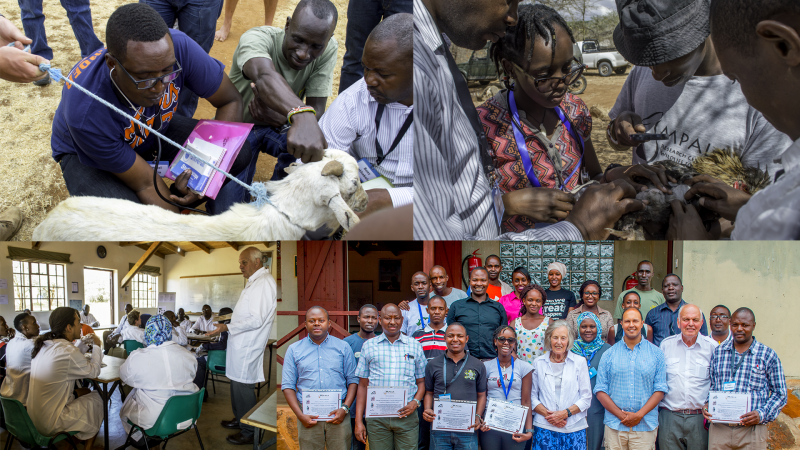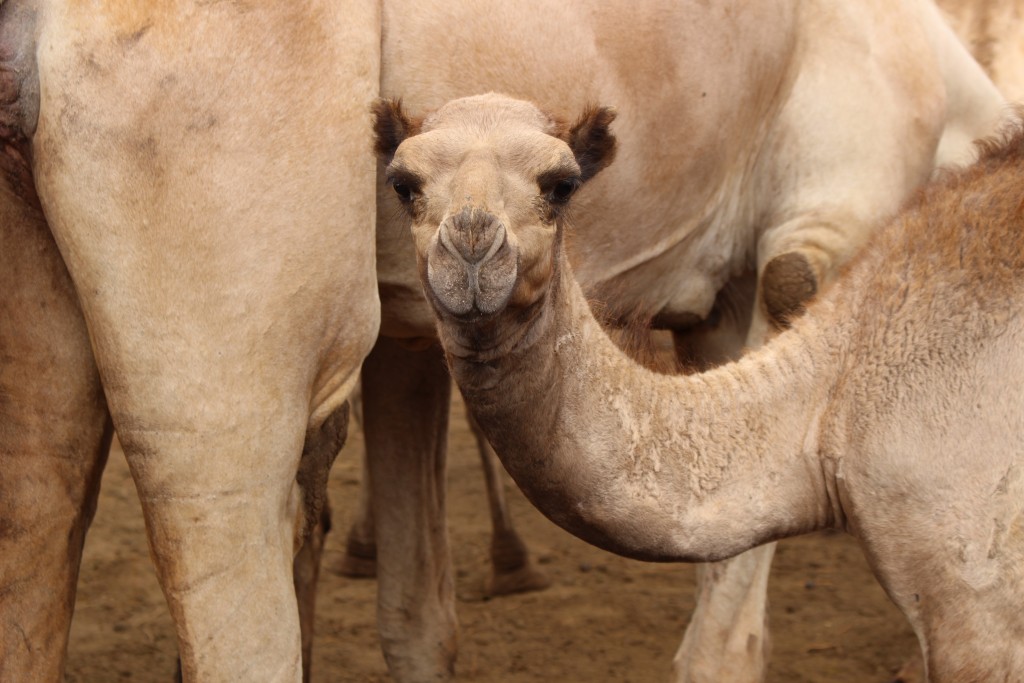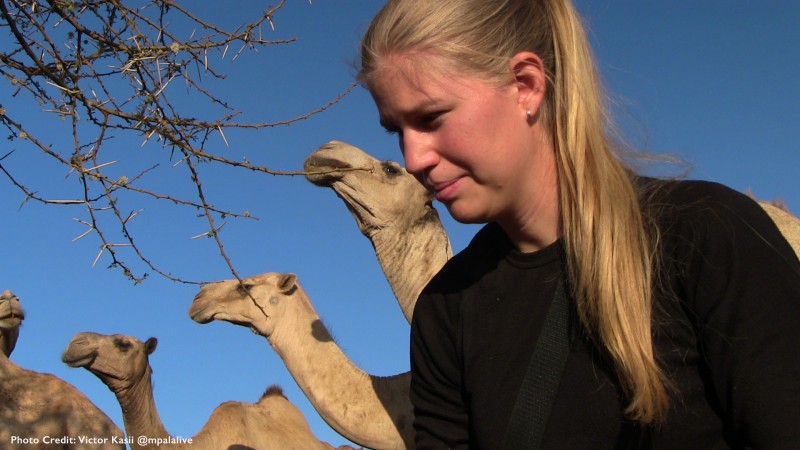Laikipia’s heritage includes pastoralists and their animals living side-by-side with wildlife (teachers find downloadable lesson plans on habitats and communities). Every so often, a herd of goats, cattle or camels will be seen on the live camera feeds at Mpala Research Centre, the home of African wildlife on Explore.org. Researchers here believe that coexistence between wildlife, people and domestic animals is possible and are constantly looking for ways to make this a reality.
For Sofie Tinggren, a postgraduate student from the Swedish University of Agricultural Sciences (SLU), studying camels extends her reach far as these unique animals are widely spread throughout the Middle East and Africa. Her focus in Laikipia is on factors affecting camel milk yields and how mastitis impacts production. Mastitis is inflammation of the mammary gland or udder of the dairy animals such as cows and camels, caused by a bacterial infection. Bacteria in the udders cause major losses in milk production because it reduces quality, quantity and profitability.
Camels have a solid place in the lives of communities dwelling in arid and semi-arid areas. Known for their strength and ability to withstand dry climatic conditions, camels are not only used to provide milk, meat and leather but also as a mode of transport for the nomadic people of the region. Also, they are considered as wealth and insurance against drought, an almost ever-present threat in the drylands that leads to livestock mortality.

While camels present better opportunities for pastoralists and ranchers in the region, Mpala’s pillars in Science, Education and Conservation continue to drive the need to disseminate knowledge and information to communities for better management of other domestic animals including cattle, sheep, goats and chicken. This is especially important in a landscape where wildlife and domestic animals cross paths every day, cross-infecting each other with diseases. During a recent Livestock, Wildlife and Public Health training at Mpala, Professor John and Margaret Cooper lectured and led interactive lessons that included clinical and postmortem examination of animals with the aim of helping veterinary doctors, students, ranch workers and communities improve in livestock health and production methods.

Back at the hippo pool, a healthy herd of Boran cattle can be seen grazing on the edges of the river. Mpala raises Boran cattle and other domestic livestock alongside elephants, hippos, and lions. Borans look very similar to Brahman, or zebu, cattle, a close relative that was domesticated in South Asia and that is descended from the Indian auroch. Like all zebu cattle, boran have a hump on their back, floppy ears, and a noticeable dewlap. They typically have white, fawn, or grey coats, but colours can vary from brown to red.

The beautiful Boran breed is popular for the strength it bears against parasitic and infectious diseases, heat in the arid and semi-arid areas and drought.
For viewers on Explore.org and at Mpala, we hope to continue seeing a healthy stream of animals, wild and domestic.
Peace,
Victor Kasii @mpalalive




